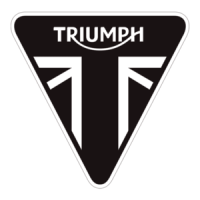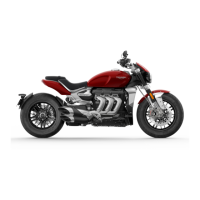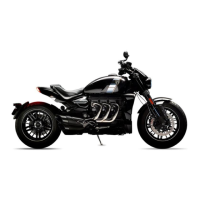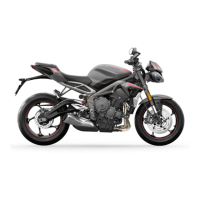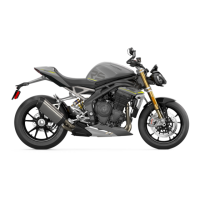Frame and Bodywork
General Frame Inspection
1.
Inspect the frame
and
footrests for accident
and
other damage, cracks, splits
and
general
dilapidations. Check
all
fixings for security.
If
any faults are
found,
the frame must
be
replaced.
If
the motorcycle
is
involved
in
an
accident or
collision it must
be
taken
to
an
authorised Triumph
dealer for inspection
and
repair before it
is
ridden
again.
The frame must not be modified
in
any
way.
Any
modification
to
the frame, such
as
welding or drilling,
may
weaken the structure causing
an
unsafe riding
condition leading to ioss of control and
an
accident.
2.
Check the operation of the side stand to make
sure it
is
securely held
in
the retracted position
by
the spring. Rectify any faults.
If
the return spring
is
faulty,
the side stand could
extend whilst the motorcycle
is
being ridden. This
will cause
an
unsafe riding condition, which could
lead
to
loss of motorcycle control
and
an accident.
3.
Inspect the bank angle indicators
on
the rider's
footrests for
wear.
The bank angle indicators are
worn out when the
5mm
of the bank angle
peg
remains.
Use of a motorcycle with bank angle indicators worn
beyond the maximum limit (when the bank
angl.e
indicator
is
worn
to
a minimum 5
mm
in length)
Will
allow the motorcycle to
be
banked
to
an unsafe
angle. Therefore, always replace the bank angle
indicator pegs
when
they are worn to 5 mm
in
length.
Banking
to
an
unsafe angle may cause instability,
loss of motorcycle control and
an
accident.
The bank angle pegs must not
be
used as a guide to
how far the motorcycle may
be
safely banked. This
depends
on
many various conditions including,
but
not limited
to,
road surface, tyre condition
and
weather. Banking
to
an
unsafe angle will lead
to
loss of motorcycle control
and
an
accident.
" 5mm
\
17.8
Service Manual - Rocket
III
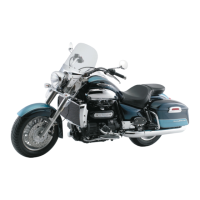
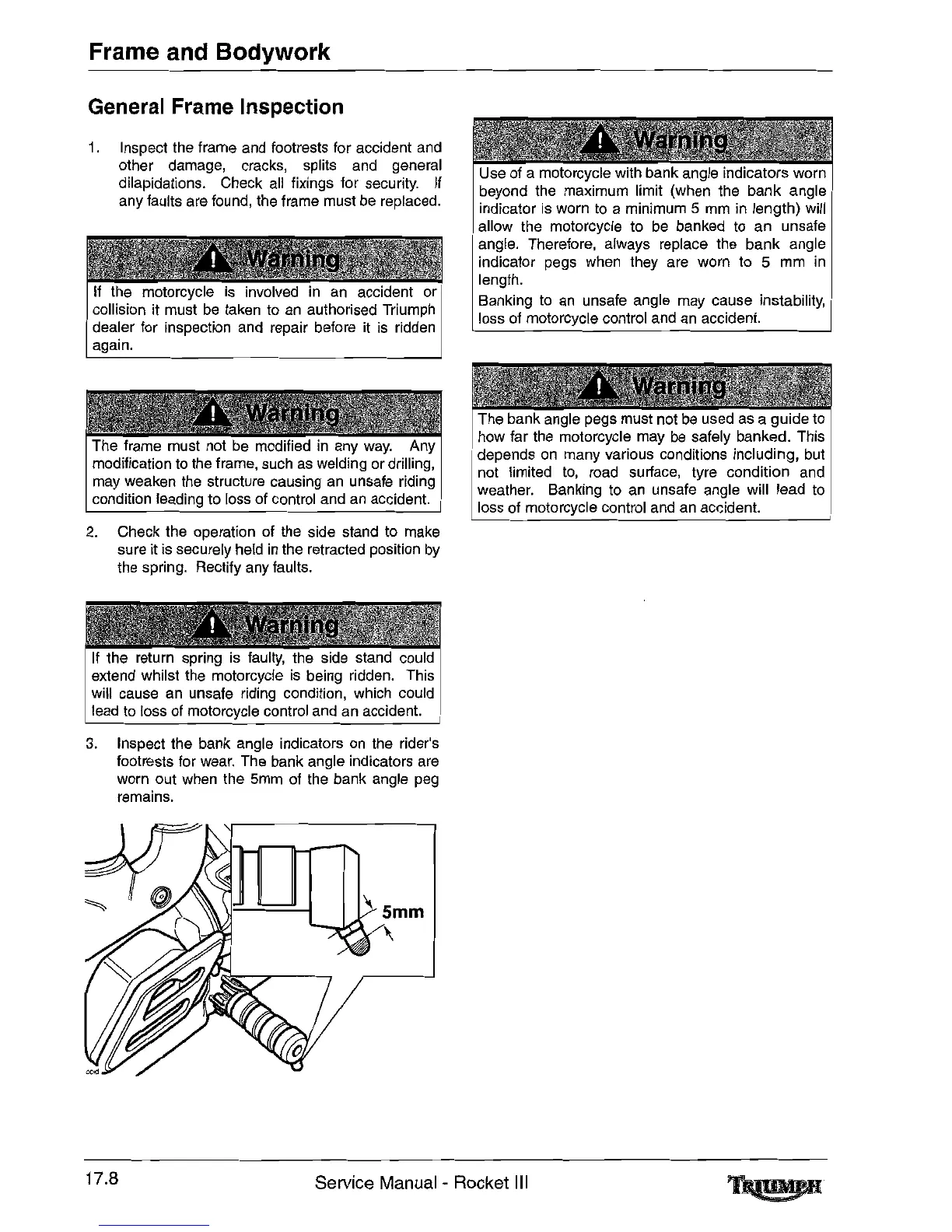